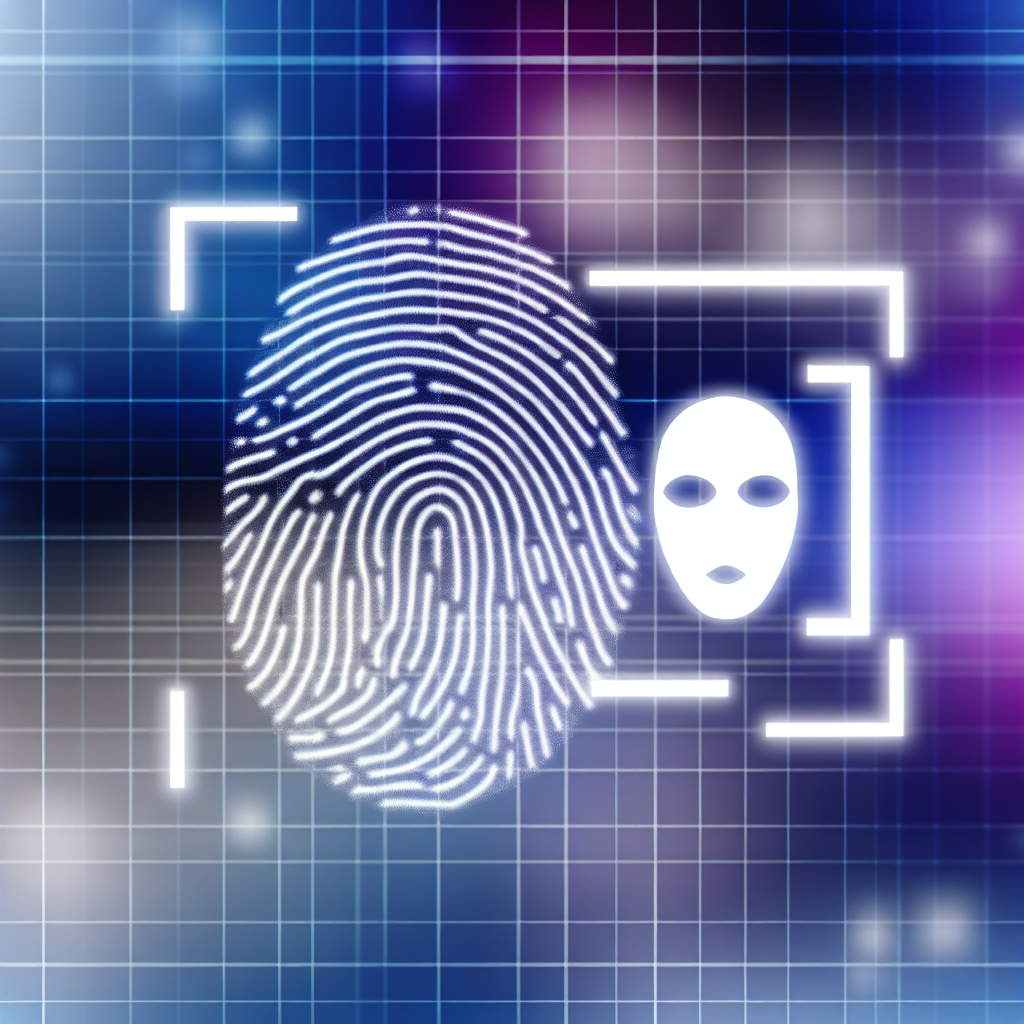Integration of edge nodes and IoT edge analytics is revolutionizing biometric security protocols by reducing latency and enabling real-time processing for fingerprint and facial recognition technology. The synergy between edge and cloud computing enhances efficiency, improves security, and protects sensitive information in identity verification processes. This advancement in biometric authentication is crucial for industries like banking and healthcare to enhance security measures and protect assets.
In today's digital age, the need for robust security measures has never been more critical. Biometric technology is revolutionizing the way we authenticate identities and protect sensitive information. From fingerprint recognition to facial recognition, biometrics offer a secure and efficient means of verifying individuals. In this article, we will delve into the world of biometrics and explore how edge nodes, edge-cloud synergy, and IoT analytics are enhancing security protocols. Join us as we discuss the future of security and the role that biometric authentication plays in safeguarding our digital assets.
- 1. "Harnessing Edge Nodes for Real-Time Biometric Security Protocols"
- 2. "Exploring the Synergy Between Edge and Cloud for Enhanced Biometric Authentication"
- 3. "IoT Edge Analytics: Revolutionizing Identity Verification Through Biometrics"
- 4. "The Future of Security: Fingerprint and Facial Recognition Technology"
1. "Harnessing Edge Nodes for Real-Time Biometric Security Protocols"

In the rapidly evolving landscape of biometric security protocols, the concept of harnessing edge nodes for real-time processing has emerged as a game-changer. Edge nodes, which refer to devices or sensors located at the periphery of a network, play a critical role in reducing latency and enabling real-time analysis of biometric data.
By leveraging edge nodes for processing biometric information, organizations can significantly improve the speed and efficiency of security protocols. This is especially crucial in scenarios where immediate identification and authentication are paramount, such as access control systems or time-sensitive transactions.
The synergy between edge and cloud computing also enhances the capabilities of biometric security protocols. Edge nodes can perform initial processing of biometric data, such as fingerprint recognition or facial recognition, before sending relevant information to the cloud for further analysis and verification. This approach not only reduces latency but also ensures that sensitive data remains secure and protected.
Moreover, the rise of IoT edge analytics has further revolutionized biometric security protocols. With the proliferation of connected devices and sensors, organizations can now collect and process biometric data at the edge of the network, enabling faster and more accurate identity verification.
Overall, harnessing edge nodes for real-time biometric security protocols offers a powerful solution for enhancing security in various industries. By integrating edge computing with biometric authentication technologies, organizations can strengthen their security protocols, improve efficiency, and ensure the seamless verification of individuals' identities while protecting sensitive information.
2. "Exploring the Synergy Between Edge and Cloud for Enhanced Biometric Authentication"

Biometric authentication has become a crucial aspect of security protocols in various industries, from banking to healthcare. The use of biometrics, such as fingerprint recognition and facial recognition, provides a more secure and convenient way to verify identities. However, as the demand for real-time processing and latency reduction increases, exploring the synergy between edge and cloud computing has become essential.
Edge nodes, which are devices located closer to the source of data, can help reduce latency by processing data locally rather than sending it to a centralized cloud server. This is particularly important for biometric authentication, where speed and accuracy are paramount. By leveraging edge nodes for IoT edge analytics, organizations can achieve faster response times and improved efficiency in identity verification processes.
The edge-cloud synergy allows for a seamless integration of edge nodes and cloud computing resources, combining the benefits of local processing with the scalability of the cloud. This hybrid approach enables organizations to handle the growing volume of biometric data while ensuring real-time processing for enhanced security measures.
In conclusion, the synergy between edge and cloud computing is instrumental in enhancing biometric authentication systems. By leveraging the strengths of both technologies, organizations can achieve improved efficiency, reduced latency, and enhanced security in their identity verification processes.
3. "IoT Edge Analytics: Revolutionizing Identity Verification Through Biometrics"

IoT Edge Analytics is revolutionizing identity verification through biometrics by bringing real-time processing and enhanced security protocols to the forefront. By utilizing edge nodes, IoT devices are able to analyze and process biometric data at the edge of the network, reducing latency and improving the overall efficiency of identity verification systems.
One of the key benefits of IoT Edge Analytics in identity verification is the synergy between edge and cloud computing. This allows for faster and more accurate fingerprint recognition, facial recognition, and other biometric authentication methods. By processing biometric data at the edge, organizations can significantly reduce the risk of data breaches and unauthorized access to sensitive information.
Moreover, IoT Edge Analytics enables organizations to implement advanced security protocols that ensure the integrity of the biometric data being collected and analyzed. This includes encryption techniques, secure communication channels, and multi-factor authentication processes that add an extra layer of protection to identity verification systems.
Overall, the integration of IoT Edge Analytics in biometrics is transforming the way organizations approach identity verification, paving the way for more secure and efficient processes. By leveraging the power of edge computing, organizations can enhance security measures, reduce latency, and improve the overall effectiveness of their biometric authentication systems.
4. "The Future of Security: Fingerprint and Facial Recognition Technology"

In the rapidly evolving landscape of security technology, biometric authentication has emerged as a cutting-edge solution for enhancing security measures. Fingerprint and facial recognition technology are at the forefront of this revolution, offering unprecedented levels of identity verification and access control.
Fingerprint recognition technology has been widely adopted in various industries for its accuracy and efficiency in verifying individual identities. By capturing unique patterns of ridges and valleys on a person's fingertips, this biometric authentication method provides a secure and convenient way to access sensitive information or physical spaces. With advancements in edge nodes and IoT edge analytics, fingerprint recognition systems can now process data in real-time, reducing latency and improving overall security protocols.
Facial recognition technology, on the other hand, utilizes sophisticated algorithms to analyze and identify facial features for authentication purposes. This technology has seen significant improvements in recent years, enabling seamless integration with edge-cloud synergy for enhanced security measures. By combining real-time processing capabilities with edge nodes, facial recognition systems can provide swift and accurate identity verification, making them an invaluable tool for securing sensitive information and assets.
As we look towards the future of security, the integration of fingerprint and facial recognition technology will continue to play a pivotal role in safeguarding critical assets and data. With their unparalleled accuracy and efficiency, these biometric authentication methods are poised to revolutionize security protocols and enhance overall protection measures for individuals and organizations alike.
In conclusion, biometric technology is revolutionizing security protocols by harnessing the power of edge nodes for real-time processing and latency reduction. By exploring the synergy between edge and cloud computing, enhanced biometric authentication methods are being developed to ensure stronger identity verification. The rise of IoT edge analytics is further revolutionizing the field, enabling more efficient and accurate security measures. With advancements in fingerprint and facial recognition technology, the future of security looks promising as biometrics continue to enhance overall safety and protection. It is clear that biometrics is paving the way for a more secure and reliable future in the realm of identity verification and security protocols.





